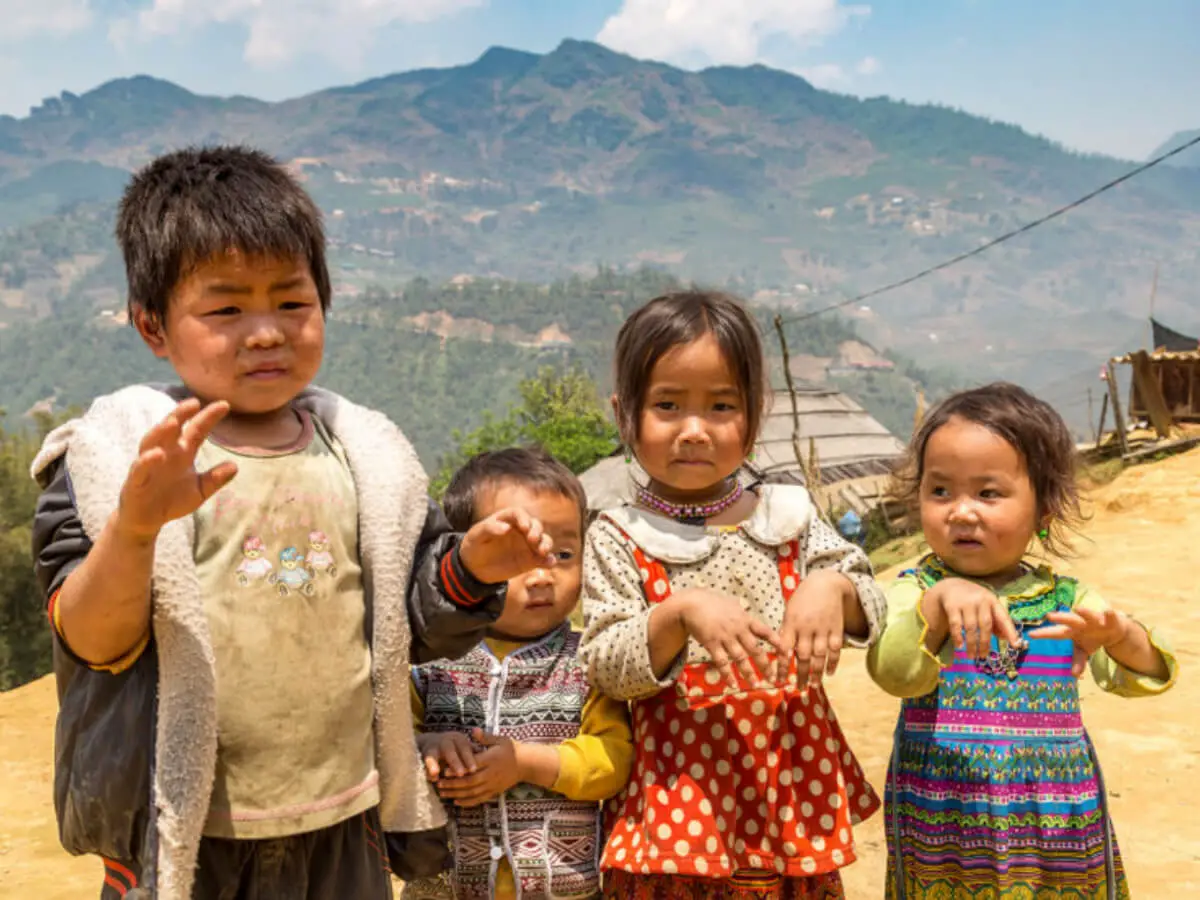According to the World Bank’s statistics, the poverty rate in Vietnam has declined dramatically from around 70 percent to below 6 percent since 2002. This astounding result is attributed to the Vietnamese government’s effort in reducing poverty, transforming Vietnam “from one of the world’s poorest nations to a lower-middle-income country”.
However, the unsolvable issue with poverty in Vietnam is that more than 70% of the impoverished population comes from Ethnic minorities (measured using Vietnam’s poverty line). Despite several solutions and policies, Ethnic poverty is strongly persistent in Vietnam: poor children have to leave school, adults struggle to be employed.
Why Is This The Case? What are the causes of Ethnic Poverty?
GEORAPHICAL ISOLATION & DEPENDENCY IN AGRICULTURE
Most Ethnic minorities in Vietnam settle in rural and mountainous where the city infrastructures have yet developed and been sufficient for them to pursue a stable life. Vietnam has 415 districts in mountainous and remote regions, but they are still behind in terms of modernization. Basing on uneven land, most cities lack commercial buildings which foster and create higher employment opportunities in rural areas.
Furthermore, some ethnic groups even settle in deep forests where they are secluded completely from up-to-date utilities. Residents like those are kept out of modern development, withholding their traditional but obsolete living styles.
In the past, Vietnam is an agricultural country with its main focus on producing and exporting agricultural products. Although the nation has concentrated on service and industrial development instead, agriculture is still the main source of income for rural residents, Ethnic Tribes in particular.
With the limited jobs and markets, trade and investment in these regions are quite restrained. Citizens struggle to find different careers and enhance their skills, thus they end up depending on agriculture as their only livelihood.
There is nothing wrong with working in agricultural fields. The problem is they are too dependent on it. If there was a landslide or extreme cold, crops would weather, so farmers would lose all their living sources.
LARGE FAMILY SIZE
The first image that came to my mind when I heard two words “Poverty” and “Vietnam” was a small ethnic girl trying to sell merchandise to tourists in Sapa, a town in Lao Cai Province. She was on her bare feet, cheek blushing because of the freezing winter. Her mother was there too, carrying a baby on her back while holding hands with two or more kids.
This is a typical scene in the remote mountainous areas where many households have from 5 to 10 offspring. Two adults cannot feed all their kids, so child labor is relatively common: youngsters aged around 6 to 10 are obliged to help their families by either working at the farm or selling goods to travelers. Because adults are off to work, older children might have to take care of their younger siblings as well.

Having a large family is part of the tradition in some ethnic minorities. The uncontrolled birth and financial burden have led several families to poverty. To earn livelihoods, youngsters might have to leave school early to support their family’s financial stability. Besides the economic aspect, Ethnic poverty includes malnutrition and a limit of access to education; therefore, a large number of offspring is one of the direct causes of poverty.
LACK OF EDUCATIONAL OPPORTUNITIES
The solution to Poverty lies in Education.
Because Ethnic minorities usually live in remote areas, they have to travel miles to have access to education. The tremendous distance has interrupted many bright students’ learning journeys. Some oungsters of minor groups are extremely diligent and determined to go to school despite the cold and long road; however, difficulties still occur: many families are too poor to provide their kids with appropriate textbooks and essential study materials, such as pencils or notebooks.
We have discussed this many times on Project Sprouts so I recommend you checking other related blogs on this Poverty Issues by clicking here. You can find multi-dimensional discussions on the topic of poverty and education on our main page.
At Project Sprouts, we realize that we can not solve all the problems relating to poverty. But we can seek to make a difference in the lives of needy children by giving them school supplies and encouraging them to continue their education; we can give them winter coats, boots, and blankets to help them stay warm during the cold winter months.
Project Sprouts would love to have you be a part of our community and help us to help worthy children in North Vietnam.
You can find out more about Project Sprouts by clicking here or go to our give now page to donate by clicking here. As we are a grassroots organization, all funds go to help those in need.
Related Content:
How Can Education Help Fight Poverty?
The United Nations’ 4th Sustainable Development Goal – Quality Education has emphasized the importance of education in combating not only poverty but also other societal issues.
Learning how education can support impoverished people will help you understand why the world needs education and what the mission of Project Sprouts is
You can read more by reading How Can Education Help Fight Poverty? by clicking here
How School Closures Affect Students?
In 2018, there are about 260 million children who cannot go to school, this accounts for nearly one-fifth of the global population. That was 2 years before COVID-19 emerged. Now, the situation is dramatically different: it continues to exacerbate after new waves of COVID-19 have delayed schools’ opening. Many more students are out of school; meanwhile, some stopped learning because they lack digital devices to study online.
So, What is really happening?
You can learn more by reading How School Closures Affect Students?. by clicking here


